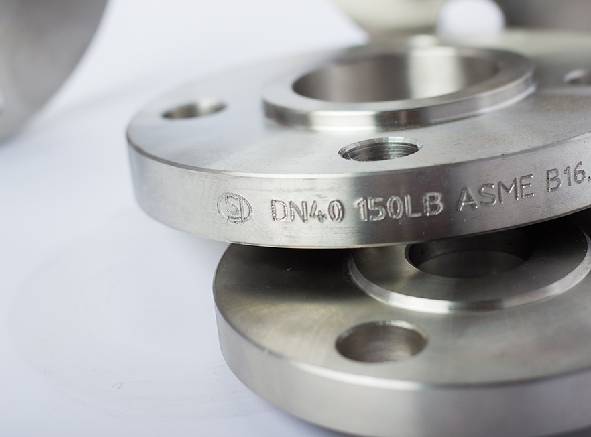-
Cangzhou Yulong Steel Co., Ltd.
-
Phone:
+86 13303177267 -
Email:
admin@ylsteelfittings.com
- English
- Arabic
- Italian
- Spanish
- Portuguese
- German
- kazakh
- Persian
- Greek
- French
- Russian
- Polish
- Thai
- Indonesian
- Vietnamese
- Zulu
- Korean
- Uzbek
- Hindi
- Serbian
- Malay
- Ukrainian
- Gujarati
- Haitian Creole
- hausa
- hawaiian
- Hebrew
- Miao
- Hungarian
- Icelandic
- igbo
- irish
- Japanese
- Javanese
- Kannada
- Khmer
- Rwandese
- Afrikaans
- Albanian
- Amharic
- Armenian
- Azerbaijani
- Basque
- Belarusian
- Bengali
- Bosnian
- Bulgarian
- Catalan
- Cebuano
- China
- China (Taiwan)
- Corsican
- Croatian
- Czech
- Danish
- Esperanto
- Estonian
- Finnish
- Frisian
- Galician
- Georgian
- Kurdish
- Kyrgyz
- Lao
- Latin
- Latvian
- Lithuanian
- Luxembourgish
- Macedonian
- Malgashi
- Malayalam
- Maltese
- Maori
- Marathi
- Mongolian
- Myanmar
- Nepali
- Norwegian
- Norwegian
- Occitan
- Pashto
- Dutch
- Punjabi
- Romanian
- Samoan
- Scottish Gaelic
- Sesotho
- Shona
- Sindhi
- Sinhala
- Slovak
- Slovenian
- Somali
- Sundanese
- Swahili
- Swedish
- Tagalog
- Tajik
- Tamil
- Tatar
- Telugu
- Turkish
- Turkmen
- Urdu
- Uighur
- Welsh
- Bantu
- Yiddish
- Yoruba

Nov . 13, 2024 07:38 Back to list
fire flange
The Importance of Fire Flanges in Industrial Safety
In the realm of industrial safety, fire prevention is paramount. One of the critical components that contribute to a fire-safe environment is the fire flange. These specialized flanges play an essential role in the integrity and safety of piping systems, particularly in industries where flammable materials are handled. Understanding the function and implementation of fire flanges can significantly enhance fire protection strategies.
What are Fire Flanges?
Fire flanges are designed to provide a secure connection between pipes while preventing the spread of fire. They are typically made of durable materials that can withstand high temperatures and pressures. The primary purpose of a fire flange is to maintain the structural integrity of piping systems in the event of a fire. By creating a reliable seal between pipes, fire flanges help to contain any hazardous materials that might otherwise leak out during a fire.
Types of Fire Flanges
There are several types of fire flanges, each designed for different applications. Among the most common are
1. Standard Fire Flanges These flanges are usually made of steel and are coated with fire-resistant materials. They are suitable for most piping systems and provide a reliable connection.
2. Fire-Safe Flanges These flanges offer enhanced fire resistance, ensuring that even under extreme conditions, they won't fail or allow leakage.
3. Reduced Bore Flanges Designed for specific applications, reduced bore flanges minimize the internal diameter, thereby enhancing fluid velocity and reducing the amount of flammable material that can escape.
4. Specialized Flanges In some cases, industries may require custom flanges designed to meet specific fire safety standards or environmental regulations.
fire flange

Installation and Maintenance
Proper installation of fire flanges is crucial for ensuring their effectiveness. This involves careful adherence to guidelines and standards laid out by organizations such as the American Society of Mechanical Engineers (ASME). The flanges must be installed with the correct torque specifications to avoid leaks and ensure that they remain intact under pressure.
Regular maintenance is also vital. Inspecting fire flanges for signs of wear or damage can help prevent potential hazards. Any corrosion, cracks, or other issues should be addressed immediately to reestablish a secure and safe connection. Additionally, maintaining a clean environment around flanges is essential to mitigate fire risks.
Regulatory Standards
In most industries, the use of fire flanges is governed by local, national, and international safety regulations. The National Fire Protection Association (NFPA) and other regulatory bodies have established guidelines that must be followed to ensure the safety of industrial operations. Compliance with these standards not only protects workers and the environment but also helps companies avoid costly fines and legal issues.
Case Studies and Real-World Applications
Several case studies illustrate the importance of fire flanges in mitigating fire risks. For instance, in chemical processing facilities, the use of fire flanges has been shown to significantly reduce the likelihood of fire-related incidents. In one notable incident, a facility that failed to use proper fire flanges suffered a catastrophic leak that resulted in a large fire, causing extensive damage to equipment and posing danger to personnel. Conversely, facilities that employed robust fire flange systems reported higher levels of operational safety and compliance.
Conclusion
In conclusion, fire flanges are a critical component in maintaining safety in environments that handle flammable materials. Their role in preventing leaks and containing hazardous substances cannot be overstated. As industries continue to evolve and expand, the importance of adhering to fire safety standards and employing effective fire flanging solutions will only grow. By investing in high-quality fire flanges and ensuring proper installation and maintenance, companies can significantly reduce the risk of catastrophic events, safeguarding both their operations and their personnel. Ultimately, the commitment to fire safety should be viewed as not just a regulatory requirement, but as a fundamental aspect of operational excellence in any industrial setting.
Latest news
-
ANSI 150P SS304 SO FLANGE
NewsFeb.14,2025
-
ASTM A333GR6 STEEL PIPE
NewsJan.20,2025
-
ANSI B16.5 WELDING NECK FLANGE
NewsJan.15,2026
-
ANSI B16.5 SLIP-ON FLANGE
NewsApr.19,2024
-
SABS 1123 FLANGE
NewsJan.15,2025
-
DIN86044 PLATE FLANGE
NewsApr.19,2024
-
DIN2527 BLIND FLANGE
NewsApr.12,2024
-
JIS B2311 Butt-Welding Fittings LR/SR 45°/90° /180°Seamless/Weld
NewsApr.23,2024











